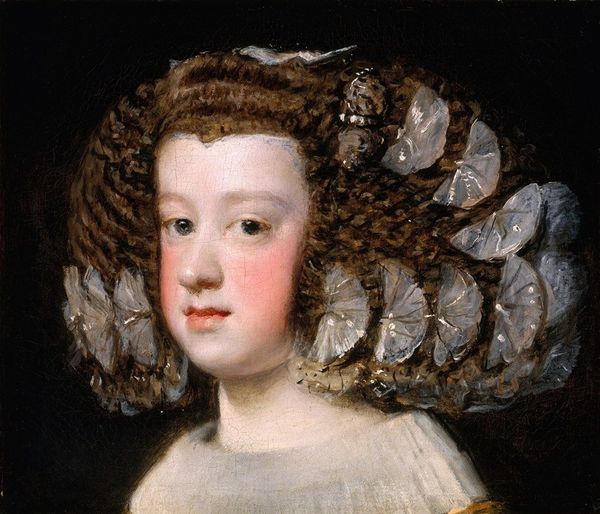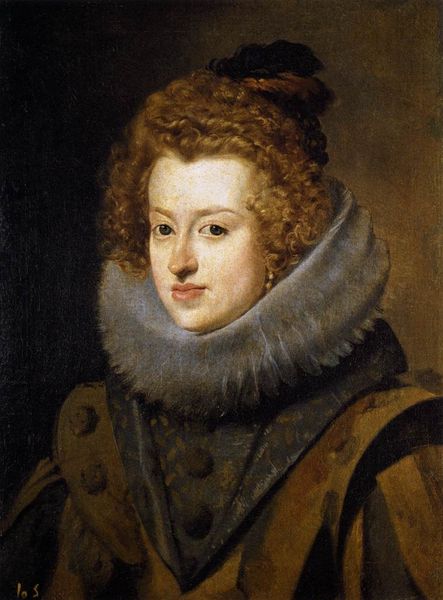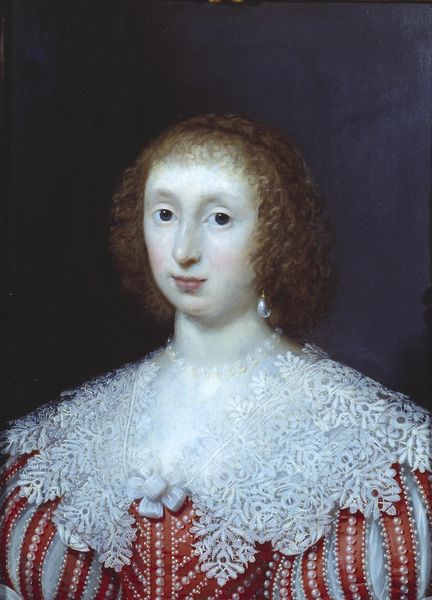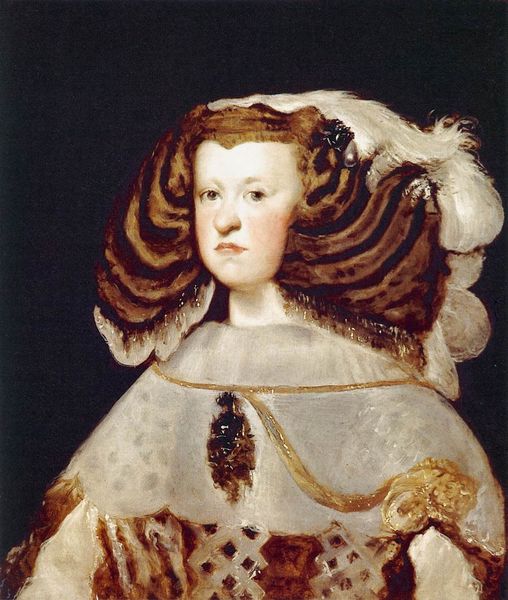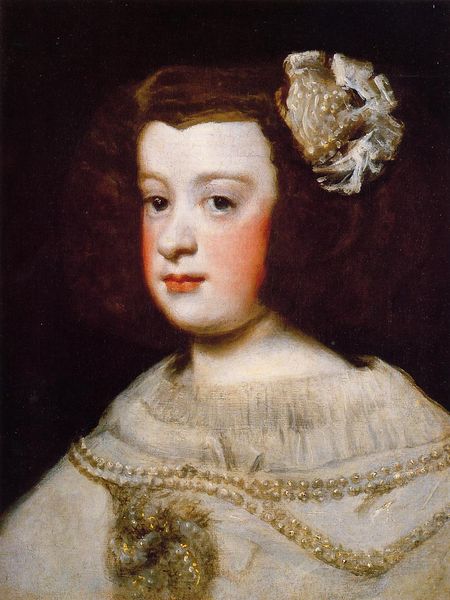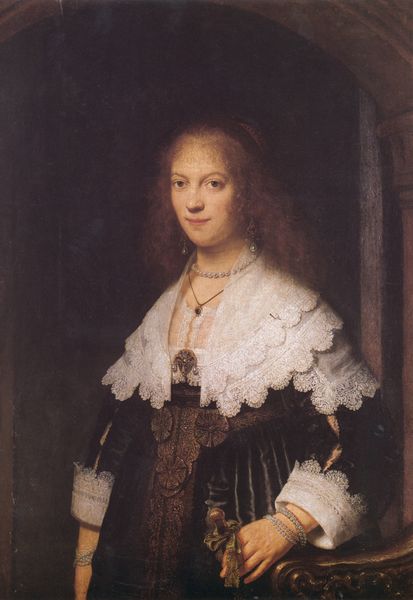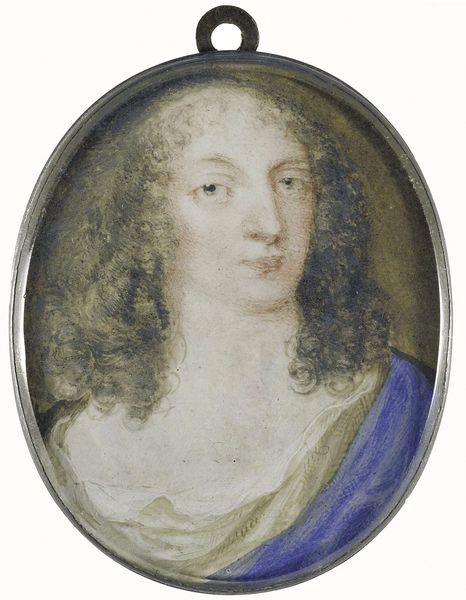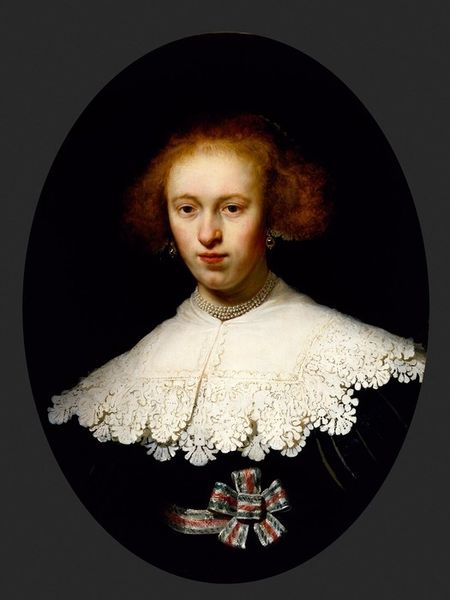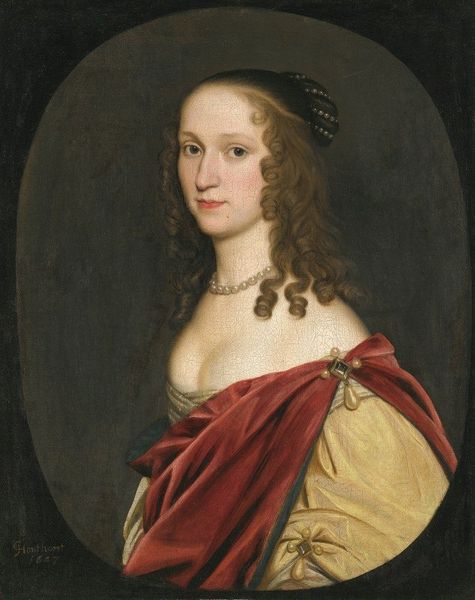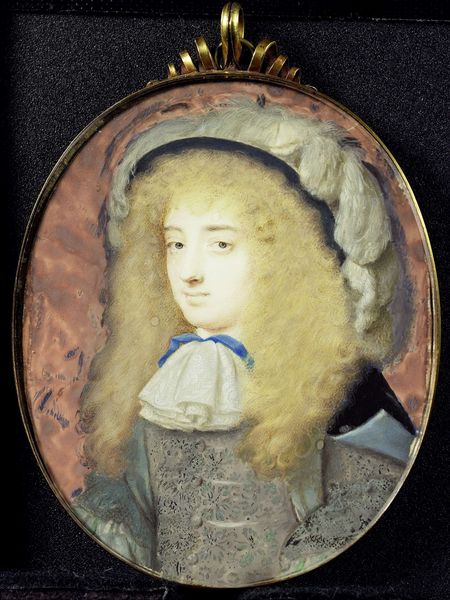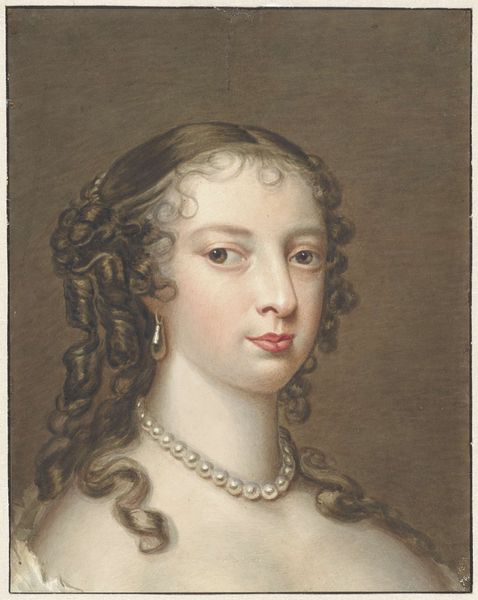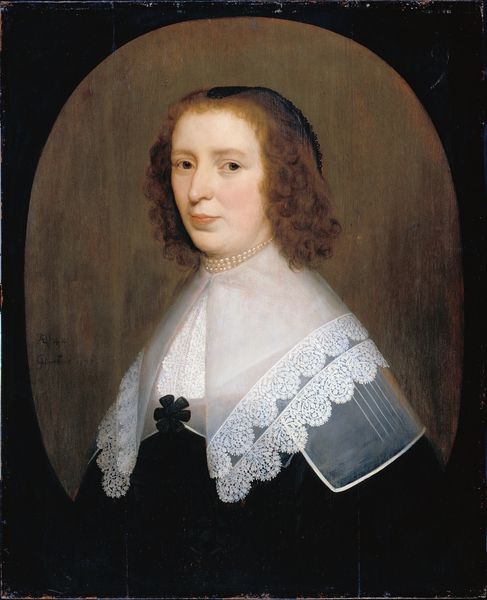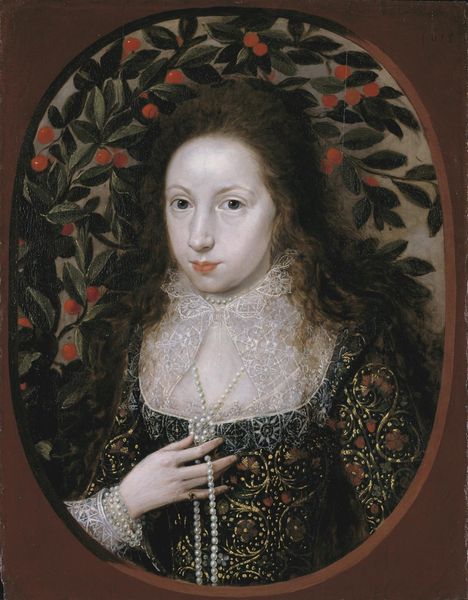
painting, oil-paint
#
portrait
#
baroque
#
painting
#
oil-paint
#
oil painting
#
history-painting
Copyright: Public domain
Editor: Here we have Diego Velázquez's oil on canvas painting, "Queen Mariana," from 1656. I'm immediately struck by how the subject's elaborate hairstyle and clothing contrasts with her seemingly reserved expression. How do you interpret this work, particularly its role in depicting power? Curator: That’s a perceptive observation. Considering Velázquez was the court painter, portraits like these were crucial for projecting royal authority. Think about the socio-political landscape of 17th-century Spain. This wasn't just about capturing a likeness; it was about crafting an image of the monarchy. Do you notice how the artist used costume as a tool for establishing that image? Editor: Absolutely, the sheer volume and ornateness of her dress and hair certainly speak to a certain level of power and status. Was this image intended for public display? Curator: Most definitely. Portraits of royalty served a public function. They reinforced the perceived divine right of kings and queens. They circulated within the court and were sent to other royal families, negotiating alliances, showing their prestige. Consider what this image was meant to communicate, and to whom? Editor: That context makes her stoic expression even more intriguing, almost as if she’s burdened by this image of power. Is it an idealized image of power? Curator: Indeed. It is a negotiation between her humanity, her place as an object within dynastic negotiation, and the visual language of court portraiture that the monarchy cultivated. I appreciate your observations about her face in contrast to her styling. That makes it interesting for contemporary eyes to see it within our expectations around personal expression. How does understanding its original function change how you perceive the work now? Editor: Knowing its role in shaping political perception definitely gives me a different lens to view portraiture in general! Thanks, that really opened my eyes to a deeper reading of "Queen Mariana" beyond just aesthetics. Curator: It's about seeing art as active participant in social and political life of their time. A painting is not just the physical object, but all its historical traces too.
Comments
No comments
Be the first to comment and join the conversation on the ultimate creative platform.
